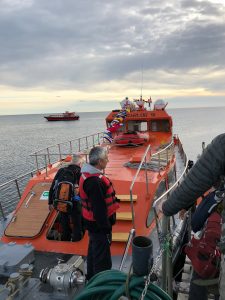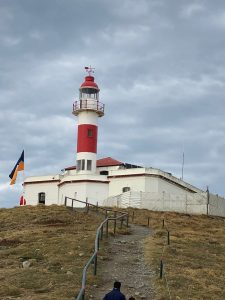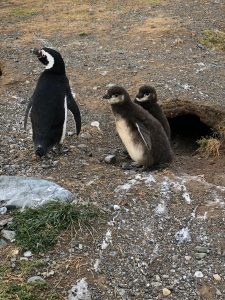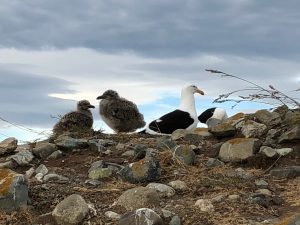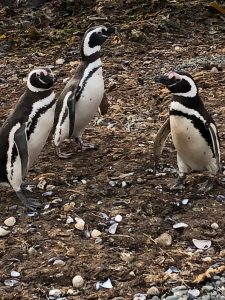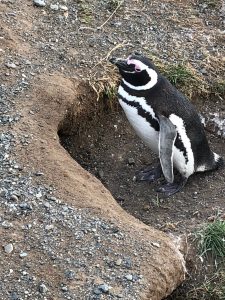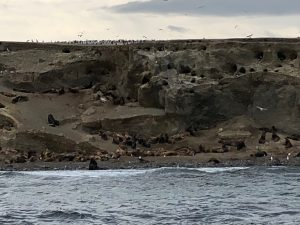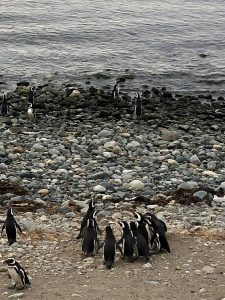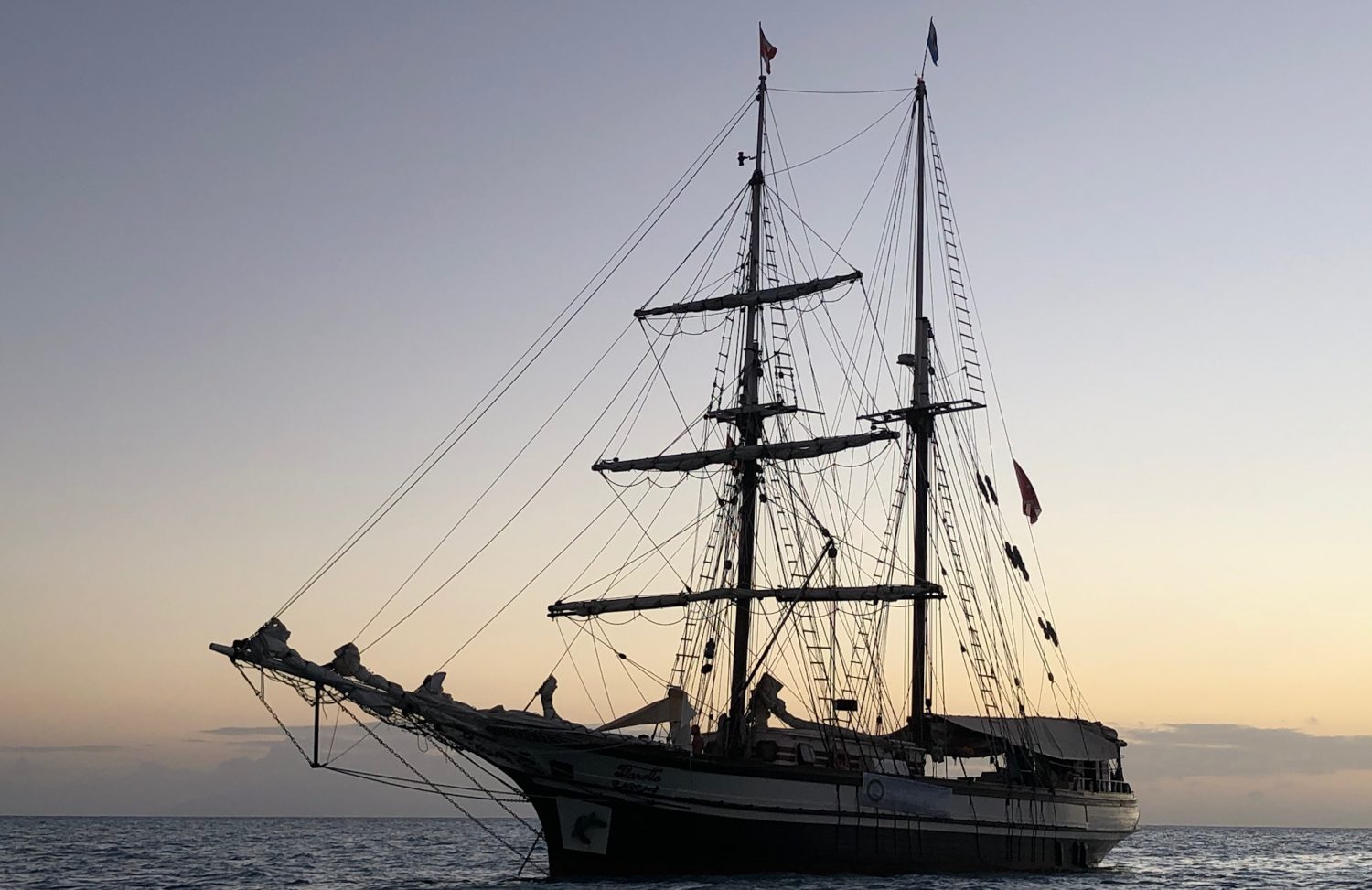Up at 5:20AM to finish getting our gear set and a look out the window showed a lovely pink and orange sky for just moments before the sunrise at 5:50. We had to grab a quick breakfast and get in the van at 6:30; we were off to catch a boat to take us to Isla Magdalena. About 30 minutes on the road brought us to a small dock jutting out in the strait, and a not very big red boat waiting for us. It quickly filled up with others, all of us bundled up against the morning chill. (My body was warm enough with my multiple layers, but I think I will need my long johns under my hiking pants from now on). After about an hour on the boat we arrived, and were greeted by thousands of Magellanic penguins!
There were approximately 120,000 penguins which nest on the island from November to March, creating little burrows where they lay their eggs and usually hatch 2 offspring. Once the “cubs” have molted, they are led to the sea by their parents and sent on their way. Along the shore is where the older adults who are no longer breeding and the teenagers play, leaving those still caring for young to do the work in their burrows. There are predators — the Chilean Skua bird is particularly brutal, as well as foxes who make it difficult for the young to make it to adulthood if they aren’t protected in their little homes. Also on the island were thousands of kelp gulls who compete with the penguins for grass in which to build their nests. The island is uninhabited outside of the breeding time period, when the penguins swim away, but not to any specific place—sometimes Brazil, sometimes up the Pacific coast. They basically follow the fish/food.
A little further along we trolled around another island, but didn’t/couldn’t disembark, so essentially drifted as we watched sea lions swimming in the surf and lounging on the rocks. They were enormous, brown in color and basically doing what sea lions do. There were also penguins near the shore of that island, and they didn’t seem to interfere with each other or even interact.
We arrived back in Punta Arenas about noon and had lunch in a pizza restaurant on the main restaurant street. Then a quick walk back to the hotel to gather our luggage and into another van for a 3 hour ride to Puerto Natales, the entryway to the Torres del Paine National Park and the beginning of the “W” track tomorrow. Along the way we stopped for a quick photo of ostrich-type bird, called rhea, and then some alpaca and llama, most likely farmed as they are not native to this area, but come from the north.
We had some time at a nice little hotel in Puerto Natales where we had to re-sort our luggage, leaving behind our big suitcases and packing a large 60L backpack for the following 5 days. We didn’t have much time to visit the town because it took us some time to get organized. And despite my best efforts I’m sure I over packed. I just don’t have the experience of multi-day backpacking and staying in the equivalent of hostels to effectively give up some of the things I like to have — clean clothes and my collection of stuff for everyday.
Dinner was at a local restaurant right on the water, a lake called Last Hope because of an explorer who was trying to find the passage from the Atlantic to the Pacific, continually trying to different routes in search of the Magellan Straight. This lake was his last chance and it didn’t prove successful. The fjord runs into a mountain. The meal was average (pre-ordered what had been called ginger rice noodles), but the view was magnificent.
Then it was a short trip back to the hotel for sleep; early day tomorrow but it took some time to fall asleep.
